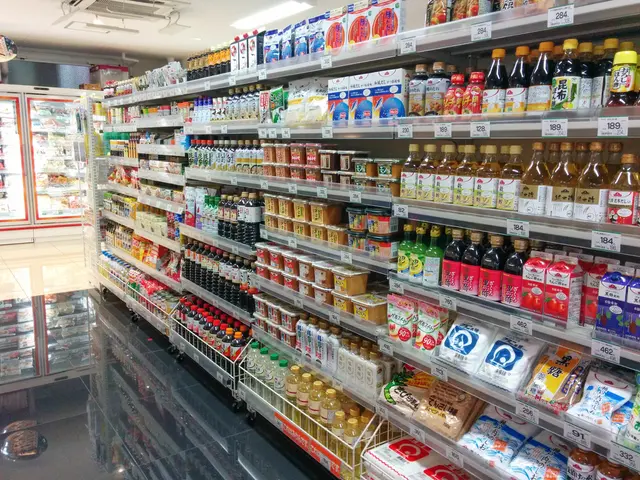Lower oil prices lead to a 22% reduction in Saudi Aramco's profits
In a significant development, Aramco, the world's largest oil exporter, has reported a decline in profits for ten consecutive quarters since reaching record highs in late 2022. This downturn can be attributed to a combination of factors, including volatile oil prices, geopolitical tensions, and changing global energy demand dynamics.
Oil price volatility has played a significant role in Aramco's revenue fluctuations. Periods of price weakness, due to oversupply concerns, OPEC+ production decisions, and global economic slowdowns, have reduced cash flow and profit margins.
Geopolitical risks, such as heightened tensions in the Middle East and global political uncertainties, have also impacted Aramco. These factors have led to market instability, affecting investor confidence and putting pressure on the company's stock price and market valuation.
The energy transition and demand shifts towards cleaner energy sources have further dampened demand forecasts for fossil fuels. This has resulted in project delays and cancellations in alternative energy markets, intensifying competitive and regulatory pressures on traditional energy companies like Aramco.
Increased regulatory scrutiny and investment risk around fossil fuel companies, driven by climate policies, have created a cautious investment environment, negatively influencing Aramco’s valuation.
As a result, Aramco has experienced a reduction in its market capitalization, reflecting investor concerns about future earnings stability. Although exact figures for market cap changes over the last 10 quarters are not available, such profit squeezes in a leading oil producer typically lead to notable dips in market valuation as investors reassess growth prospects and risk exposure.
Aramco's president and CEO, Amin H. Nasser, has stated that market fundamentals remain strong. While the price of Aramco's shares on Tuesday was not specified, the company's shares were trading at 23.91 riyals. Nasser anticipates oil demand in the second half of 2025 to be more than two million barrels per day higher than the first half.
Since its high point of nearly $2.4 trillion in 2022, Aramco has lost more than $800 billion in market value, despite Middle East tensions, including the short-lived Israel-Iran war in June, which have not significantly affected oil prices, currently around $70 a barrel. The price of Aramco's secondary share offering last year was 27.35 riyals.
In conclusion, the decline in Aramco's profits over the past 10 quarters can be attributed to a complex interplay of factors, including oil price volatility, geopolitical risks, energy transition, regulatory and market risks. These factors have put pressure on revenues and profitability, leading to a decrease in the company’s market value.
The fluctuating oil prices, arising from various causes such as oversupply concerns, OPEC+ production decisions, and global economic slowdowns, have had a significant impact on Aramco's revenue flow and profit margins, contributing to the decline in its profits.
The energy transition, coupled with shifts in energy demand towards cleaner sources, has resulted in competitive and regulatory pressures on traditional energy companies like Aramco, further contributing to the company's decreased market value.




